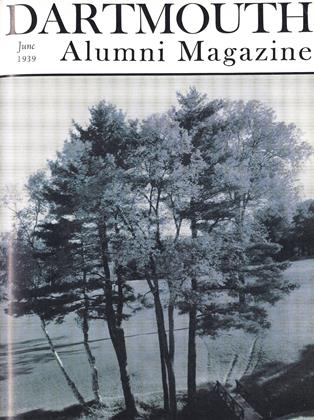by Bruce Winton Knight (NewYork, Farrar and Rinehart, 1939). 606pp. $3.25.
Professor Bruce Winton Knight succeeds admirably in achieving his aim of producing an economics text which both teaches economics and enlists the interest of the reader. Most efforts in this direction have degenerated into a watereddown variety of "economics made easy." But by various devices Professor Knight injects the interest ingredient without seriously impairing the substance. His style of writing is clear, simple, semi-popular, and he has vitalized it by a subtle touch of humor and by frequent literary allusions. He also sustains interest by a logical, wellintegrated organization of the material, so that the reader is carried along by a natural unfolding of the subject. Moreover, realism is developed by generous illustration, and by the blending of theoretical analysis and applied economics.
The first six chapters are devoted to a description of the competitive system and the economic structure. This serves as a background for the treatment of price theory and problems which occupy the next eight chapters, as well as Chapter XVIII, dealing with the general price level, and Chapters XXI, XXII, and XXIII, dealing with distribution of the national income. The treatment of price is thorough and comprehensive, describing prices under conditions of free competition, monopoly, monopolistic competition, and government regulation. Other chapters give enlightening discussions of the topics: economic risk, international economic competition, booms and depressions, government finance, Socialism, and Fascism.
The high merit of Professor Knight's work commends it both for college courses in beginning economics, and for the general reader who seeks a readable, yet substantial, account of how the economic system works.
 View Full Issue
View Full Issue
More From This Issue
-
 Sports
SportsBig Green Teams
June 1939 By Whitey Fuller '37 -
 Class Notes
Class Notes1918*
June 1939 By ERNEST H. EARLEY -
 Article
ArticleThe Undergraduate Chair
June 1939 -
 Class Notes
Class Notes1929*
June 1939 By F. WILLIAM ANDRES -
 Article
ArticleHanover Browsing
June 1939 By HERBERT F. WEST '22 -
 Class Notes
Class Notes1930*
June 1939 By ALBERT I. DICKERSON
G. W. Woodworth
-
 Article
ArticleTuck School
December 1940 By G. W. Woodworth -
 Article
ArticleTuck School
January 1947 By G. W. Woodworth -
 Article
ArticleTuck School
March 1947 By G. W. Woodworth -
 Books
BooksIF YOU'RE A BANK DIRECTOR
December 1950 By G. W. WOODWORTH -
 Article
ArticleTuck School
August 1944 By G. W. Woodworth, H. L. Duncombe Jr. -
 Article
ArticleTuck School
February 1947 By G. W. Woodworth, H. L. Duncombe Jr.
Books
-
 Books
BooksYOUR HEARING, HOW TO PRESERVE AND AID IT.
April 1933 -
 Books
BooksShelflife
Mar/Apr 2010 -
 Books
BooksWHO'S WHO AMONG THE MICROBES
MARCH 1930 By A. H. Chivers -
 Books
BooksYANKEE DICTIONARY.
OCTOBER 1963 By C.E.W. -
 Books
BooksThe Great Fight
SEPT. 1977 By DAVID BRION DAVIS '50 -
 Books
BooksMARRIAGE.
JUNE 1969 By LOUIS WOLF GOODMAN '64

